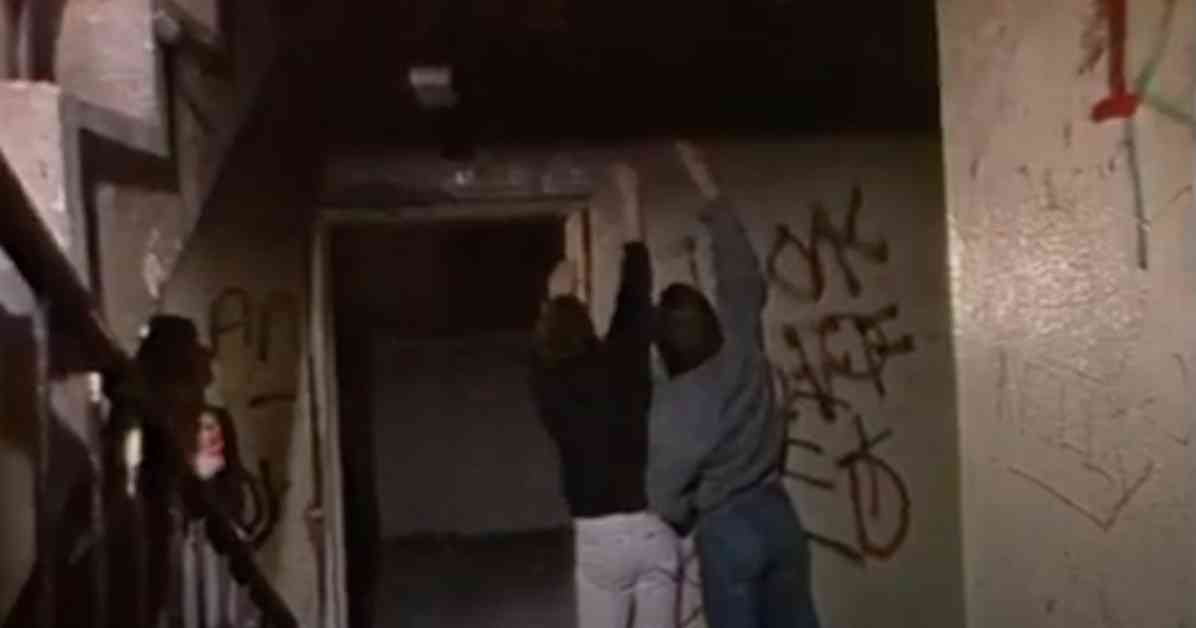Safe and Secure: Inside Edinburgh’s High-Security Estate with Families in Need of Babysitters
Every city has certain streets and neighbourhoods where trouble is never far away. Life in one Edinburgh scheme was so troublesome in the 1980s people had to ‘house sit’ for each other. An ITN report on the West Granton estate from 1985 has been unearthed and it shows what life was like for those on the infamous scheme during the height of the heroin epidemic. The concrete jungle is said to have been forgotten by the local authority after it was built in the early 1970s and the presenter of the piece discusses issues relating to crime, housing, poverty and drug use.
Uncovering the Reality of West Granton Estate
ITN interviewed a number of those with experience of living on the estate but opens up the broadcast by showing residents laughing with a cup of tea in hand as police try to blow up their tyres after they were slashed by a group of youths. The news segment then shows how the area has become run down with graffiti strewn across crumbling building walls. The presenter describes the scene: “There are some places where you really shouldn’t leave your car unattended and this Edinburgh estate is one of them. West Granton is just two miles north of the city centre and it was built in the 1960s to replace old slums. Graffiti covered walls, dark alleyways and stinking staircases are monuments to the decline it has suffered since then. Now it is simply a modern slum.”
Challenges Faced by the Community
Jim Balloch, a community worker from the scheme, sheds light on the challenges faced by the residents. He explains, “This part of Edinburgh is given a low priority when people want to get a house. So what happens is you have to be quite desperate before you take an area like this. So that has led to the fact that a lot of young people, and problem or anti-social families, are moving to the area.” Jude Ferguson, a member of the West Granton Tenants Association, adds that when the estate was built, it was then just ignored by the authorities. She notes that improvements were never made, and the area became a hub for drugs, glue sniffing, and youth conflicts.
Economic Decline and Unemployment
The economic decline of the West Granton estate was closely tied to the fortunes of the nearby docks in the local area and Leith. By 1985, the Granton harbours had transformed into a yacht marina, and although the Leith docks were still relatively busy, there were not enough jobs to go around. This lack of economic opportunity at the nearby dockyards transferred to the scheme, leading to a rise in unemployment. The presenter highlights that during the 80s, Edinburgh was experiencing around a 25 per cent unemployment rate, with West Granton potentially facing even higher rates among the youth. Additionally, there were approximately 200 empty flats out of the one thousand homes in the community, exacerbating the housing crisis.
Housing Issues and Crime
The presenter delves into the housing issues within the estate, pointing out that the architects’ awards for the estate design did not translate to practical functionality. Jim Balloch mentions the challenges faced due to the design flaws, such as difficulties for emergency services to access homes and the high cost of electrical heating. These issues, combined with the presence of ramp ways that led to dampness within the houses, created a breeding ground for crime. The streets often became a playground for children with nothing else to do, as evidenced by a group of youths dismantling construction equipment left in the street. The residents, such as the Milligan family, expressed feeling under siege due to multiple burglaries, forcing them to arrange for house sitters even when going out briefly.
Heroin Epidemic and Social Issues
One of the most pressing issues faced by the residents of West Granton was the pervasive presence of heroin. Former drug addict Frank McGarry and dealer Arthur Crow shed light on the ease of access to the drug within the scheme, likening it to purchasing a pint of milk from a store. Jude Ferguson emphasizes the cycle of addiction that many young residents fall into due to lack of opportunities, boredom, and peer influence. She explains how experimentation with drugs can escalate to heroin addiction, leading to devastating consequences for individuals and families within the community. The presenter highlights that alongside unemployment, vandalism, burglary, violence, and poor housing conditions, heroin addiction posed a significant challenge for the residents.
Conclusion
The West Granton estate in Edinburgh serves as a stark reminder of the systemic issues that can plague a community when economic opportunities dwindle, housing conditions deteriorate, and social problems escalate. The residents’ resilience in the face of adversity, from organizing house sitters to combatting drug addiction, speaks to their determination to create a safe and secure environment for their families. As efforts to revitalize the estate continue, it is essential to address the underlying issues of poverty, unemployment, and housing inadequacies to ensure a brighter future for all residents.













